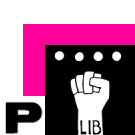User:Kendal/Project Proposal
Editable Pad
https://pad.xpub.nl/p/klbprojectproposal
What do you want to make?
A physical rental agency that leases virtual space in exchange for creative projects.
With modernisation and a push for categorisation of the internet, early fringe virtual communities were pushed out in favour of walled gardens like Facebook. The digital spaces reflect a form of a non-place, created with the idea of this is what the internet could be in the future. Instead these worlds were abandoned and serve only now as a snapshot of the past.
Take a physical non-place like a mall. These spaces were created as a utopic glimpse into the future and now lay silent and dated, completely a product of the past. How can we activate these digital equivalents as space for creative experiments and making? If we can occupy these spaces as temporary autonomous zones, can we breathe life into the disused? Can we explore the difference between the virtual and physical world and how we can adapt to create in this environment?
How do you plan to make it?
I want to create an agency that is reminiscent of a housing website but instead of offering physical space, it will rent 3D virtual environments of the early 2000s. I am planning to build a physical office installation and website that both showcases the spaces, and explains what these early iterations of virtual worlds offer in a creative context to form small publishing moments.
What is your timetable?
Please include a timeline of what needs to be done and the order in which those things will be done.
December & January Research and gather the userspaces and affordances of each virtual world I plan to 'rent' (max 9 spaces)
January & February I then have to define a structure of the renting process and what could be offered as rent conditions. (questions of ownership)
March I have to build the website (probably most time consuming)
May & June Finally I need to gather the building materials and office supplies to build the complete office installation including a store front.
Why do you want to make it?
I want to chart the effect modernisation and catergorisation has on the creative 'worlds' of the internet. I want to understand the shift between these highly imaginative and creative worlds of my childhood and the hyperrealistic virtual spaces of today. Old platforms now feel like digital non-spaces, utopian ideas for a potential future, now abandoned, so this would be a way to explore the potentialities of these spaces. It is both a collective imagining and a collective action that I want to explore. With a interest in Net-Art, I want to explore the possibility of using these forgotten spaces as a medium, also making use of what already exists rather than creating new instances in a bid to encourage sustainability in platforms. My final exploration would be understanding ownership in the virtual world, how do EULA's control the output and constraints within these spaces?
Who can help you and how?
Alicia Framis (AMS) - Simulation as a method to present ideas, over-categorisation, architecture
Lilet Breddels (AMS) - Architecture, theory, and ideas of inhabiting space
Michael & Manetta (XPUB) - Practical help with website creation
Atelier Adam Nathaniel Furman (UK) - an architect who works in creating space for the other.
Florian Cramer (NL) - a writer who has extensive knowledge of media theory and forgotten platforms.
Virtual world developer- why are these spaces created this way, and what are the goals in development
Nick Axel (AMS) - previous editor of architecture magazine I worked at who has a hybrid practice of architecture and technology
Josephine Bosma (AMS) - Extensive knowledge in Net-Art.
Relation to previous practice
My previous practice is heavily influenced by the forgotten and fringe spaces of both the virtual and physical world. I am interested in the effects of categorisation and how time shifts, resulting often in abandoned ideas, buildings and promises. Previously I have explored the concept of Non-Places in the physical world and want to find the digital equivalent. I am interested in restructuring these spaces in a way to reignite the imagination and serve as a new medium for publishing works.
Relation to a larger context
My project is situated in many fields, it takes ideas from situationism, specifically play, non-places in architecture, and also can be viewed as a practice of media archeology. While it uses my background in architecture as a starting point, it extends the concept to virtual world architecture, worlding, and the anthropological study of space, It can help us rethink the capabilities of platforms long forgotten and give purpose to pre-existing spaces instead of the constant saturation of new worlds.
References
Walled Garden - Annet Dekker
The School of Missing Studies - Sandberg Instituut
Sorting Things Out - Bowker & Star
Temporary Autonomous Zone - Hakim Bey
Delusive Spaces - Eric Kluitenberg
Book of Imaginary Media - Eric Kluitenberg
The Lifecycle of Software Objects - Ted Chiang
Networks Without a Cause - Geert Lovink.
Synthetic Worlds - Edward Castranova
To Mend a Broken Internet, Create Online Parks - Eli Pariser (WIRED)
Public Space // The Internet: Public Embodiment of Digital Cultures - Elizabeth Anne Hampton
Raiders of the Lost Web - Adrienne LaFrance, The Atlantic 2015
Mapping Beyond Dewey's Boundaries: Constructing Classificatory Space for Marginalised Knowledge Domains - Hope A. Olson
Life on the Screen - Sherry Turkle
Virtual Worlds (Learning in a Changing World Series) - Judy O'Connell & Dean Groom
Virtual worlds, real libraries: librarians and educators in Second Life and other multi-user virtual environments - Lori Bell
